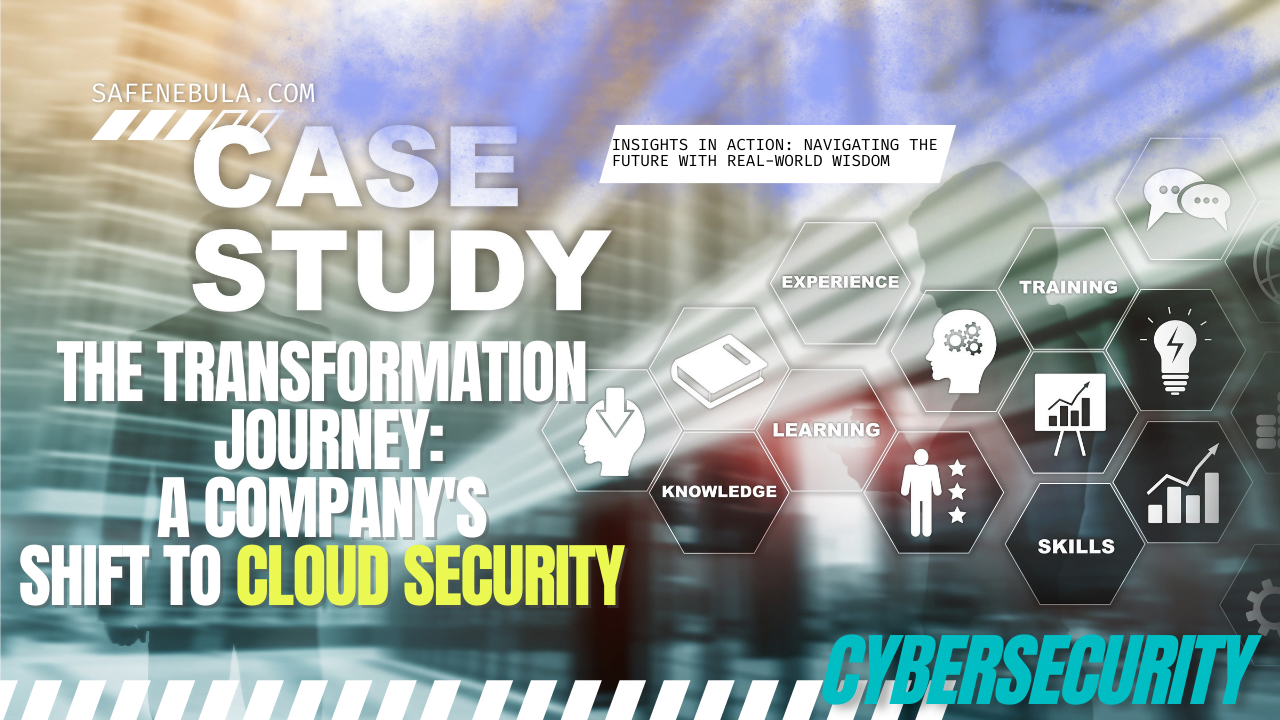In the rapidly evolving digital landscape, many organizations face the daunting task of modernizing their cybersecurity strategies to protect against increasingly sophisticated threats. One such company, GlobalTech Solutions, a leader in the financial services sector, embarked on a transformative journey from traditional IT security to a cloud-based security architecture. This case study delves into GlobalTech’s transition process, outlining the initial challenges, the cloud security solutions implemented, and the manifold benefits they realized from enhancing their cybersecurity posture in the cloud.
Initial Challenges
Legacy Systems: GlobalTech’s reliance on outdated, on-premise security solutions limited their ability to scale and adapt to new threats. These legacy systems required significant maintenance, diverting resources away from innovation.
Data Silos: Critical security data was scattered across various systems, hindering effective threat detection and response. The lack of a centralized view made it difficult to assess and mitigate risks promptly.
Compliance Concerns: With stringent regulations governing the financial industry, GlobalTech needed to ensure their cloud security measures complied with all legal and industry standards, a task made challenging by their outdated infrastructure.
Cloud Security Solutions Implemented
Cloud Access Security Broker (CASB): GlobalTech deployed a CASB to provide a unified control point for monitoring and managing data security across multiple cloud services, enhancing visibility and compliance.
Identity and Access Management (IAM): By implementing an IAM solution, GlobalTech established robust access controls, ensuring only authorized users could access sensitive data, regardless of their location.
Encryption and Tokenization: To protect data integrity and confidentiality, GlobalTech adopted advanced encryption and tokenization methods for data at rest and in transit, significantly reducing the risk of data breaches.
Automated Security Monitoring and Response: Leveraging cloud-native tools, GlobalTech automated their threat detection and response processes. This not only improved their security posture but also freed up valuable IT resources.
Benefits Realized
Enhanced Security and Compliance: The shift to cloud security allowed GlobalTech to strengthen their defenses against cyber threats and ensure compliance with industry regulations, instilling greater confidence among stakeholders.
Scalability and Flexibility: Cloud-based security solutions provided GlobalTech with the scalability needed to adapt to the company’s growth and the flexibility to quickly adjust to emerging threats and technologies.
Cost Efficiency: By transitioning to the cloud, GlobalTech significantly reduced the costs associated with maintaining on-premise security hardware and software, reallocating those resources to strategic initiatives.
Improved Collaboration and Innovation: The cloud-enabled environment fostered greater collaboration among GlobalTech’s teams, accelerating innovation and improving their ability to respond to market demands.
Conclusion
GlobalTech Solutions’ transition to cloud security exemplifies the strategic foresight and adaptability required to navigate the complexities of today’s cybersecurity landscape. By embracing cloud-based security solutions, GlobalTech not only enhanced their security posture but also achieved greater operational efficiency, compliance, and innovation capacity. This case study serves as a compelling testament to the benefits of cloud security transformation and offers valuable insights for other organizations considering a similar journey.
For the purpose of creating a coherent and illustrative timeline for GlobalTech Solutions’ transition to cloud security, let’s fabricate a detailed yet hypothetical progression of events. This timeline is designed to give structure to the transformation journey and can be adapted or expanded based on specific real-world scenarios.
Year 1: Initial Assessment and Planning
- Q1: Identification of cybersecurity challenges and inefficiencies with current legacy systems.
- Q2: Strategic decision made by leadership to transition to cloud-based security solutions.
- Q3: Comprehensive assessment of current cybersecurity posture and cloud security needs.
- Q4: Selection of cloud security service providers and initial planning for the transition.
Year 2: Implementation and Deployment
- Q1: Deployment of a Cloud Access Security Broker (CASB) to manage and monitor cloud applications.
- Q2: Implementation of Identity and Access Management (IAM) solutions to ensure secure access control.
- Q3: Integration of encryption and tokenization for data at rest and in transit across cloud services.
- Q4: Establishment of automated security monitoring and response systems for enhanced threat detection.
Year 3: Optimization and Expansion
- Q1: Review and assessment of the new cloud security architecture’s performance.
- Q2: Optimization of cloud security practices based on feedback and performance data.
- Q3: Expansion of cloud security measures to additional areas of the company’s IT infrastructure.
- Q4: Advanced training for IT staff and company-wide education on new security protocols.
Year 4: Evaluation and Continuous Improvement
- Q1: Comprehensive evaluation of the cloud security transition’s impact on the company’s overall cybersecurity posture.
- Q2: Implementation of additional cloud security enhancements and upgrades based on the latest technological advancements.
- Q3: Continuous monitoring of the cybersecurity landscape for emerging threats and potential improvements.
- Q4: Development of a long-term cloud security strategy to guide future initiatives and ensure sustained security and compliance.
Throughout this journey, GlobalTech Solutions faced various challenges, including ensuring seamless integration of cloud services, maintaining regulatory compliance, and managing change within the organization. However, by adhering to a structured timeline and remaining committed to continuous improvement, GlobalTech successfully navigated their transition to cloud security, ultimately enhancing their cybersecurity posture and operational efficiency.

